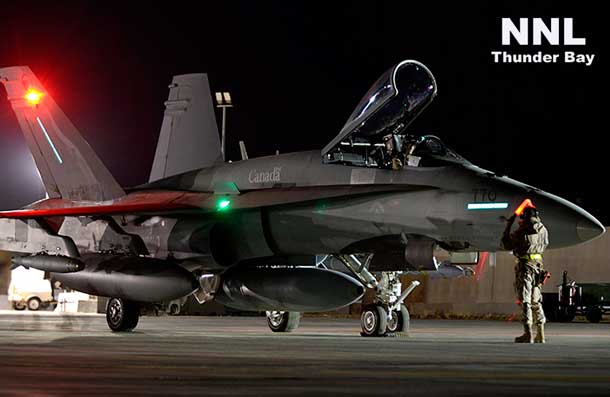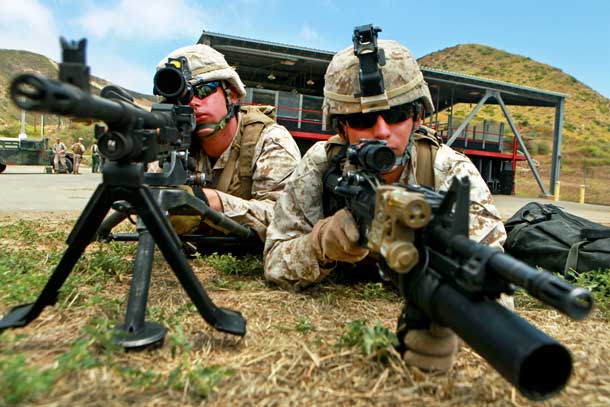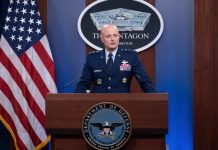Briefing from Pentagon on Fight Against Islamic State
WASHINGTON – Ongoing operations against extremist Islamic State of Iraq and the Levant forces across both Iraq and Syria comprise a comprehensive and well thought-out campaign, rather than a series of unconnected missions, a Combined Joint Task Force Operation Inherent Resolve spokesman told Pentagon reporters in a satellite feed from Baghdad today.
Army Col. Steve Warren emphasized that while the campaign against ISIL takes place at multiple locations across both countries, “all these operations are focused on a single goal to degrade, dismantle and ultimately defeat ISIL.”
For example, Ramadi, Fallujah and Abu-Heiff are mutually supporting operations, he said. “Each [operation] is tied together to create some synergy and success across all of them,” the colonel explained.
Using a map and videos to illustrate the mission’s single goal, Warren updated reporters on progress that coalition forces have made in the last 30 days and how the campaign covers “the entire breadth and depth of the battlefield” in both countries.
Coalition Isolates Iraqi Cities
Isolation operations are underway in al-Baghdadi and Albu Hayat, Iraq, with the country’s security forces and Sunni tribes working together, he said. Isolation missions also are underway in Sinjar and Fallujah.
Coalition forces have isolated Ramadi, Beiji and Sinjar from ISIL, Warren said, adding that clearing is underway in Beiji, and its oil refinery was returned to the Iraq Ministry of Oil this week.
“In Ramadi, the [Iraqi security forces continue] to make measurable progress,” he noted, adding that Ramadi’s Al Warrar camp is now secured and cleared, after 27 improvised explosive devices were removed and detonated.
In areas of deep fighting in Iraq, Warren said, coalition forces have been disrupting ISIL operations in Mosul for the last year, in addition to Dayr Az Zawr, where ISIL’s primary oil production capabilities are situated.
Operation Tidal Wave II Damages ISIL Oil Fields
“Recently, Operation Tidal Wave II has been putting significant damage on ISIL’s ability to fund itself,” Warren said of the effort to destroy oil fields, which are the source of ISIL’s funds. He added that the operation is about halfway complete.
Since the start of Operation Tidal Wave II last month, the coalition conducted a massive strike on Omar Airfield, Warren said. “We’ve stepped up our attack [and], focused our targeting on other oil facilities to include Tanak and several others,” he added.
Strides Made in Syria
In Mar-a, Syria, operations are “holding the line,” Warren said, noting that coalition forces have made 18 airstrikes there in the past 30 days.
“In Raqqah, the self-proclaimed capital of the caliphate, we are continuing to conduct disruption operations,” and seven airstrikes have been dropped there in the past month, he said.
The rebel Syrian Democratic Forces are isolating and preparing to attack ISIL in al-Hawl, Warren said. The SDF also are working to re-establish the northeastern Iraq-Syria border, he said.
Coalition aircraft have supported the SDF’s advance with 66 airstrikes in recent days, Warren said, destroying 13 vehicles, 94 fighting positions and numerous weapons systems. “We estimate we’ve killed about 287 enemy fighters,” he added.
Warren said other coalition airstrikes against ISIL in the past 30 days include 70 in Al-Hasakah; 159 in the Euphrates River valley, including Ramadi, Fallujah and Albu-Hayat; 83 in the Tigris River valley near Beiji, Mosul and Hawja, and 260 in Sinjar and surrounding areas.





